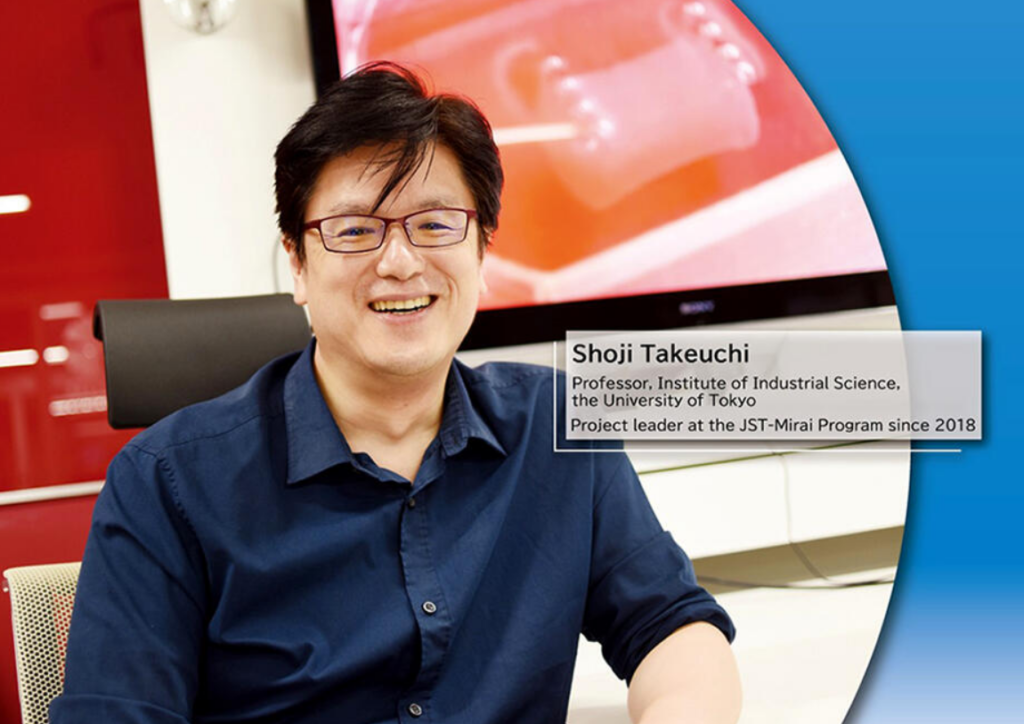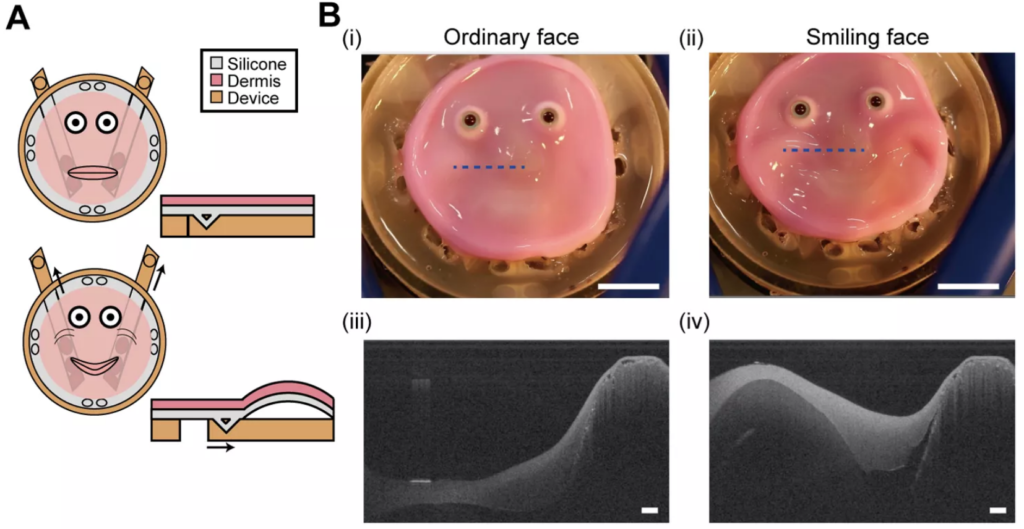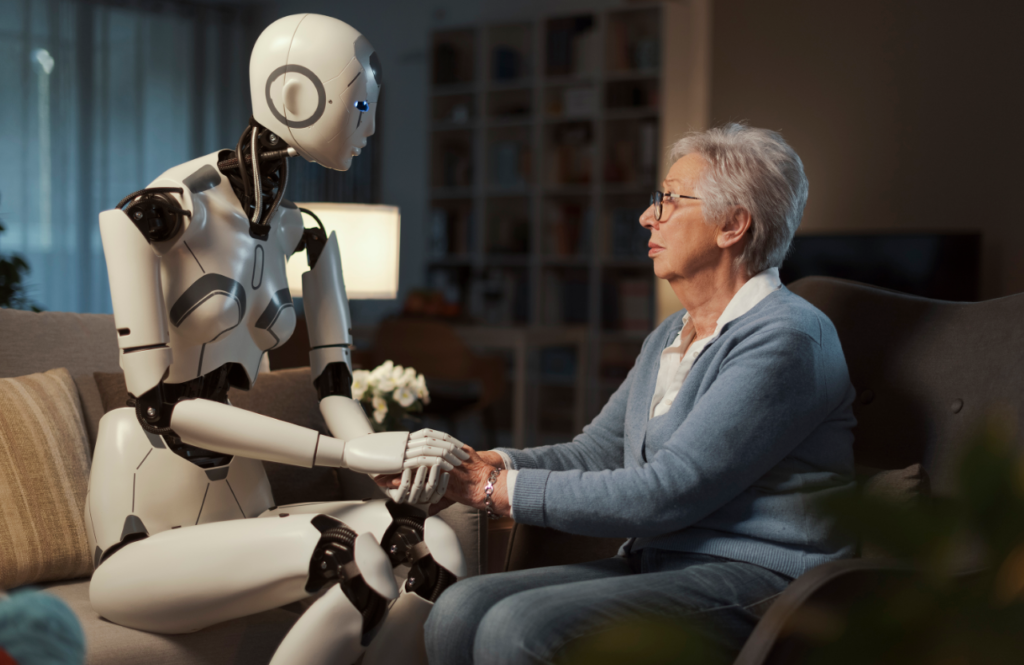Table of Contents
Picture this: a robot that not only grins at you but does so with skin that feels like the real deal. It is not sci-fi; it is Japan’s latest marvel. Welcome to the age when, besides circuitry and servos, robots wear actual living skin in the breakthrough innovation of robotics and biotechnology. Now, imagine a robot so life-like it could be a character in your favorite futuristic flick. Let’s dive deep into this fascinating leap where high-tech meets high-touch.

Smiles and Skin: The Real Deal
Okay, here it is: Japanese scientists just let loose a robot that boasts a facial skin made from human collagen. Yep, you heard that right-collagen, the very stuff that keeps our skin supple and smooth. Meet “Huggable,” the robot with a smile so real you might find yourself wondering if it’s plotting a surprise birthday party. It’s the stuff of robotics dreams-a game-changer that pushes us to a future where robots will not just appear human but are actually human, sort of.
A team of researchers at the University of Tokyo announced that they successfully bound engineered skin tissue onto the face of a humanoid robot.
What’s cool about this living skin? It’s not for show. Thanks to some seriously advanced tissue engineering, this robot’s facial expressions are about as nuanced as those of a Shakespearean actor. The skin isn’t just a pretty face; it’s functional, too. It reacts to touch and changes over time, just like our own skin does. That means Huggable can deliver a genuine-to-Betsy smile that feels warm and inviting and turns your robotic interactions into the stuff of science fiction.
The Science Behind the Smile
The team was led by Professor Shoji Takeuchi, a specialist in Biohybrid Systems; he has also made small robots that use biological muscle tissue to move along with three-dimensionally printed lab-grown meat.

With this latest experiment, the research team created a flesh-like material that can stick to a robotic finger and bend without breaking, just like that of a human. They took that “living” skin and slapped it onto a robot with light glassy eyes. And yes, it can smile too.
During previous research on a finger-shaped robot covered in engineered skin tissue we grew in our lab, I felt the need for better adhesion between the robotic features and the subcutaneous structure of the skin. By mimicking human skin-ligament structures and by using specially made V-shaped perforations in solid materials, we found a way to bind skin to complex structures. Until now, no one had figured out how to make the living skin move. I think by attaching these actuators and anchors, it became possible to manipulate the living skin for the first time. This is the new technology we developed.
Professor Shoji Takeuchi
They took collagen, a staple of skin proteins, and cultured it from human cells to create skin that breathes and stretches like ours. This isn’t just about aesthetics; the skin is functional. Unlike synthetic skins that can be as rigid as wood, this collagen-based layer can heal minor nicks and adapt to changes, making it ideal for robots designed for close human interaction.
Now, let’s delve into the nitty-gritty. Japanese researchers have taken that most staple of skin proteins-collagen-and made it into a supple, respiring skin for their bot. That is not an easy thing to do-it is high-tech hocus-pocus tinged with biological knowledge. By culturing the collagen from human cells, they have made a skin that breathes and stretches just like ours. The idea is that this is the robotic equivalent of giving your skin care, but made up of human cells-not, you know, some fancy serum.

That skin isn’t just for show; it’s functional. Where other synthetic robot skins have been as rigid as a plank of wood, this collagen-based layer can heal minor nicks and adapt to changes, making it ideal for robots designed to have very close interaction with people. If Huggable happens to bump into a wall, it’s not just going to get a dent-it may just heal itself.
What It Means for Us Humans
So, why should you care about a robot with skin? The possibilities are pretty exciting. For customer service, just imagine robots with lifelike grins that would make one seem like they are dealing with a human, not some type of metal-and-plastic machine. This can be the game-changer from doing hotel check-ins to retail-embedding a touch of empathy in our relations with technology.
And that’s not all: Huggable could offer companionship and emotional support in therapy, for instance, possibly much more so than one might expect with a more traditional robot. For anyone having a bad day or who just needs a slight bit of consolation, knowing the robot with which they interact truly “feels” emotion can make all the difference in the world.

Regular robot therapy (image above), will now look like you are talking to any other human! (Image below)

And it has most promising possibilities outside robotics too-prosthetic limbs with skin feeling alive and moving naturally, medical devices with just a tinge of human-like flexibility-the uses are just endless, and we have barely started scratching the surface. Researchers aim to add more elements, including a circulatory system and nerves, allowing robots to test cosmetics and topical drugs.
Walking the Ethical Tightrope
With great innovation, of course, comes great responsibility. The more perfect the robots get at replicating human emotions and appearance, the more we will have to consider the ethical implications. Are we ready for a time when robots can form what feel like emotional bonds? How will we handle the blurred lines between human and machine?

While that might be exciting for a robot that looks and smiles like us, it does beg the question about the nature of our interaction with machines. Are we ready for robots that can talk the talk and walk the walk emotionally? This is only part of an altogether new frontier we are likely to face, and it has to be balanced between the excitement of technological advancement and the more reflective thought of its impact on life and relationship in particular.
Various strategies have been discussed to reduce the creepiness of human-like robots, with material choice being crucial. Making robots from materials identical to those in humans and having them display similar expressions might be key to overcoming the uncanny valley
Ahead Lies the Challenge
And considering the future, Huggable and its cousins are just the very beginning. The rise of living robot skin only teases more amazing things to come. Already now, researchers have started pushing the idea even further: adding sensory capabilities such as touch and temperature to robots in the hope of close, intuitive interactions. The remaining challenge is the so-called uncanny valley. Scientists aim to give robots self-healing capabilities similar to biological skin
Briefly, Japan’s foray into living robot skin is a breakthrough to a future wherein robots would not be mere machines but companions with a hint of humanity. So, do stay tuned-robot smiles may soon become common, and who knows? The next time you talk to a robot, it just may smile back at you in skin as alive as the guy next to you. The future isn’t just bright; it’s smiling right at ya.
If you enjoyed this glimpse into groundbreaking robotics and want to share more fascinating insights, drop us a line at [email protected]. We’d love to hear from you!
Jargon Junction
Word: Uncanny Valley
Sentence within the article: “The remaining challenge is the so-called uncanny valley.”
What it actually is: A concept in robotics and animation referring to the eerie feeling humans experience when encountering a robot or avatar that looks almost, but not quite, human. As robots become more lifelike, they can sometimes cross into this unsettling space, which makes interactions feel unnatural.
Jargon Junction
Word: Collagen
Sentence within the article: “They took collagen, a staple of skin proteins, and cultured it from human cells to create skin that breathes and stretches like ours.”
What it actually is: A protein found abundantly in human skin, bones, and connective tissues, responsible for giving structure and elasticity. In robotics, collagen is used to create artificial skin that mimics the flexibility and responsiveness of human skin.